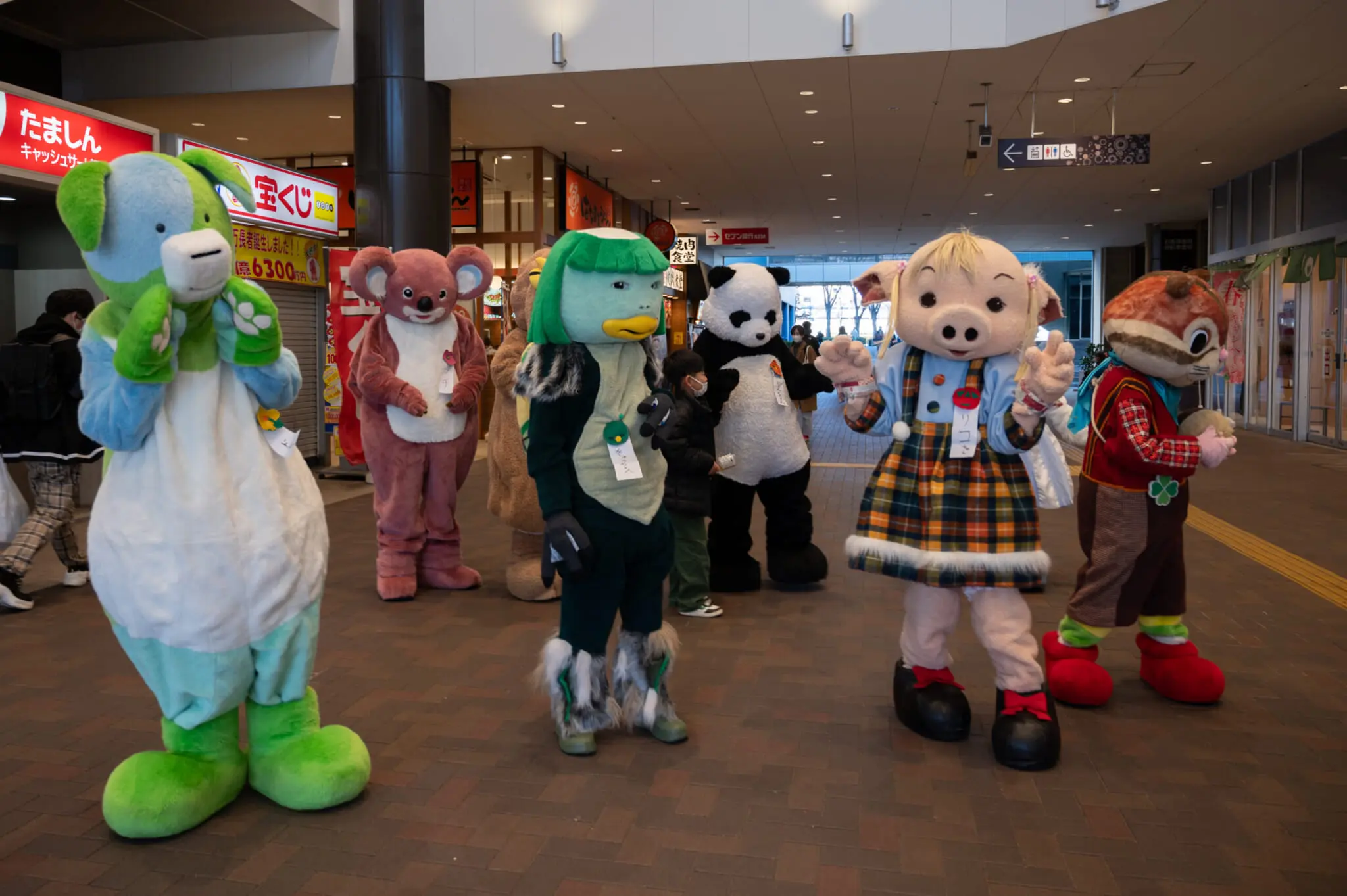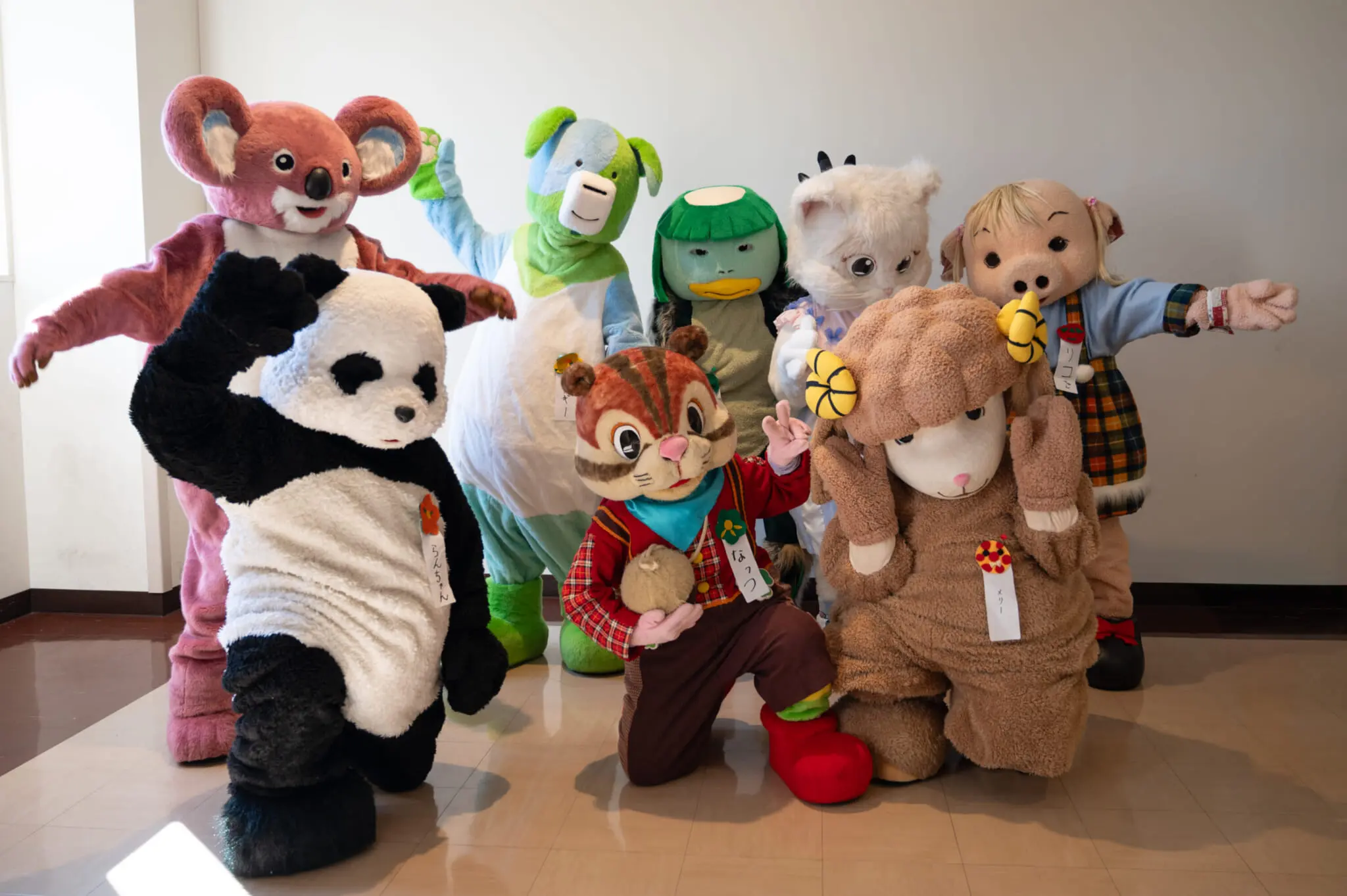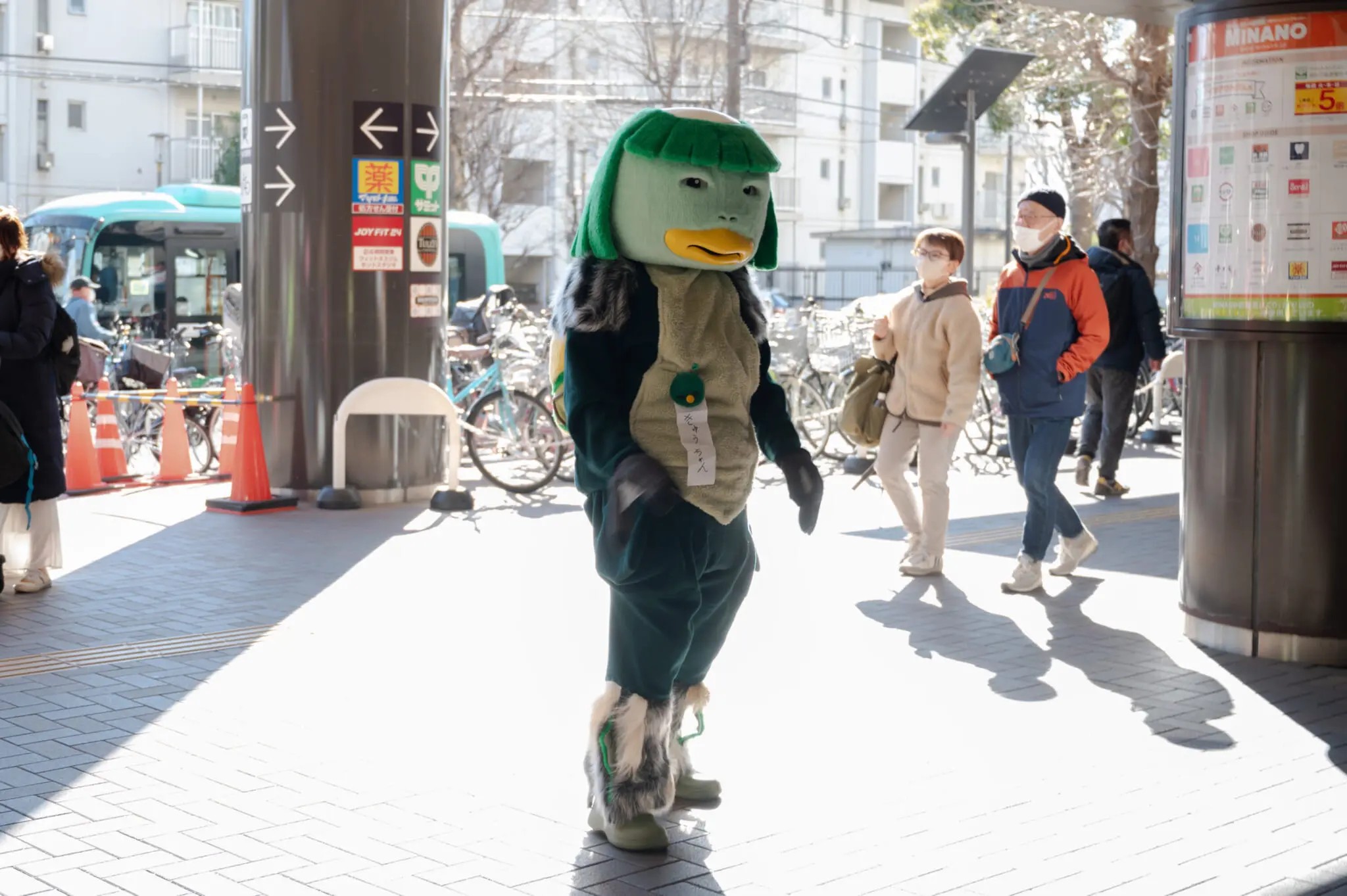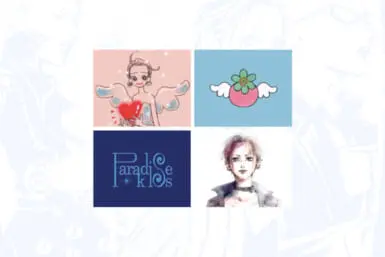This is a tale of how I donned a big furry toy in the name of research, saw my life flash before my eyes and realized a lot of things about society in the process.
Mascots in Japan
In Japan, mascots — also known as yuru-chara — can be found everywhere. In other countries, the larger-than-life characters are typically confined to sporting matches and special events, but in Japan, they have an important place in society. They can be found far and wide, promoting everything from local prefectures to language schools to ramen shops.
Yuru-chara are widely beloved. Some have even transcended their original purpose of product promotion, becoming a product in and of themselves and achieving international fame. Kumamon, the adorable black- and- white bear with rounded eyes and rosy cheeks, started out as the official mascot of Kumamoto city in Kyushu Prefecture, yet he now appears on merchandise worldwide. Unhinged, aggressive Chiitan — a self-described “0 years old fairy baby” otter who wears a turtle for a hat — has amassed millions of followers on Instagram and Twitter.
With so many mascots, there must be countless people inside the suits. Who are they, and why do they do it? What is it like to inhabit a monja (Tokyo-style okonomiyaki) with a face that represents a tiny village in Gunma Prefecture, or a shy sheep who promotes a kebab shop? There’s only one way to find out. With this question in mind, I enrolled in an amateur mascot class in a suburb of Tokyo.
Mascot School Lessons
The class is run by Choko Group, which is based in Tama city. It offers a variety of services — hiring mascots for private events, for instance, and costume rentals — but the mascot class is perhaps its best known. Beforehand, I get to choose which creature I’ll become for the day. Among the plentiful standard options — a cat, a dog, a cheerful pig in a skirt — is a kappa, a Japanese mythical creature that looks like a bipedal, zooted frog with a bald plate on its head. It is skinny in a distinctly non-mascotty way, and it looks like something grandma made for the school play. I ask my coworkers for help choosing my costume; the kappa wins by a unanimous vote.
On the day of my lesson, I arrive at a nondescript office building on the outskirts of Tokyo, full of nerves. I find my way into the classroom and encounter my fellow students, who are mainly male and over 40 — older than I was expecting. I wonder: What have I gotten myself into?
Classroom Work
The class commences, and I’m seated in a circle with my classmates. We’re handed worksheets and name tags, and told to think of our mascot character’s characteristics: age, name, personality. Everyone has brought pens and is writing furiously.
It’s time to share what we’ve decided. A friendly older man beside me has picked the dog costume and appropriately names his character “Doggy” — “Because we’ve got some people from abroad here.” Everyone murmurs in approval as we continue round the circle.
I’ve picked “Kyu-chan” in homage to the cucumbers that kappas are said to adore, and the others praise my choice. It transpires that every other student in the room is a regular. “This is my 99th time,” another older man, who has chosen Sheep as his persona for the day, tells us all proudly. For context, this class takes place once a month. And he’s not the only one with ample time under his belt. Koala has been coming for 15 years.
Trying on the Mascot Costume
Classroom time continues, with lessons on how to walk like the mascot and pose like a mascot. Without the costume on, this is a doddle. We practice things like marching on the spot and hi-fiving children. It’s easy to the point of embarrassment. But then, we don our enormous suits. It takes over ten minutes to put everything on, from waistcoats and padded helmets that go beneath the costume to the gigantic mascot head. It’s hot, heavy and I can’t see anything. I can squint through the tiny, reptilian nose holes, but that’s about it. I start to worry.
We do everything again, inside the costumes this time. Everything is so heavy that it’s hard to breathe. I’m starting to realize that this mascot thing is not as easy as I first thought.
During our lunch break, all of us thankfully out of costume, Doggy shows us pictures from his time at Yokohama Irish Dance School — him beaming alongside a group of Irish dancers. I ask him why he comes to mascot class. “I went to Disneyland and loved it,” he says, perking up at the memory. “I love performing,” he continues. When he’s not mascotting, he dances. By day, he’s a salaryman.
The others chime in, too, sharing why they’re here. Girl Sheep pulls out a photo book of the mascot shows he’s taken part in. In his daily life, he walks with the aid of leg supports, but when he’s in the mascot you wouldn’t know; he handles the heavy, bulky costume with an expert’s adeptness. The others lean closer, looking through his albums. Koala spots himself several times, in various guises, and reminisces about the costume changes. Squirrel, who is by far the most professional of the bunch, finds herself, too. They all coo about the good times. There are a couple of relative newbies. “I haven’t taken part in a show yet,” shares the youngest of the group, who aspires to be Mickey Mouse at Disney. “But I’m already looking forward to it.”

Becoming the Mascot
After lunch, we’re ferried to the mall in a van. This is where we will complete the most daunting part of our lesson, putting all we’ve practiced to the test: We will interact with shoppers in mascot form. On the way I chat to the driver, a part timer. “Some people do this because they want to be mascots,” he says. “Other people do it to relieve stress.”
At the Shopping Mall
We begin our mission with a walk-through of the area, taking note of obstacles we will encounter in our bulky suits. There’s an escalator that will ferry us from our changing area to the main floor, and it’s particularly intimidating. I keep thinking of the tiny nostril holes, the only way I can see the world, and imagine tumbling down the steps and cracking my neck. Dying as a kappa.
But everything goes smoothly. Once we have our costumes on, we descend from the upper level, with me clutching pathetically at the walls and trying to keep balance.
At this point, there is a group of mascots roaming around the shopping center, like a pack of cartoon reprobates. A dog, a squirrel, a cat in a skirt, a sheep, a girl, and a kappa.
Squirrel takes my hand and leads me to the first stop-off point. I can see the vague shape of a child from within my kappa prison. I attempt a silent mascot-y wave. The child looks appalled.
More visitors come over, and I stand around observing, trying to remember the actions I practiced earlier that day. I silently hold up my hand to a child for a high-five. She gives me one, and I am elated. My first success. I can’t remember mascots from when I was younger. Did I like them? Did I ever meet one?
Getting Used to the Costume
It’s time to move on, down another set of escalators. In this state, the only people who understand my world are my fellow mascots. Comrades.
I step on the escalator and wobble. This is it. I grip the handrails and clutch on tightly. Down.
There’s a clearing with shops where we will spend the next 20 minutes. We arrive and mill about. I dance a bit. Cat comes up to me and takes my hand, swinging it. I put my free hand over my mouth and shake silently, approximating laughter. Then I grab Cat’s other hand and we dance in a circle.
I blow a kiss to a passer-by. A kappa kiss.
A staff member at a nearby cutlet shop waves at us. We wave back. I look over and Doggy and Sheep are skipping around, holding hands. Idyllic.
The rest of the time goes by quickly. Before I know it, we’re back in the room and taking off our costumes. “Amazing! Amazing!” Doggy is overcome with happiness. “It was amazing!” he repeats. “I love, love, love it!” It’s not just him: Everyone is on a high after mascot time. We change, spraying the insides of our suits with alcohol and folding everything into its respective bags.
Reflection Time
It’s time to reflect. “I really wanted to interact more with Kappa,” Sheep says. At the start of the lesson, everyone had proposed a special assignment for the day: to help the first-timer. “But I didn’t manage it much.” He seems a bit down.
“I’m sorry,” I tell him. “I couldn’t see you so well. We did dance a bit though, didn’t we.”
He seems happy. “Yes, we did!” I’m earnest, and so is he.
Cat, too, is reflective; he feels like he should’ve been more like in-character. “Next time,” he promises himself.

Saying Goodbye
When it comes time to part ways, I find myself unexpectedly emotional. I went to mascot school because I’d struggled to comprehend why people put themselves inside these costumes. Admittedly, at first I’d been unsure of my fellow students, particularly of their potential motivations for getting inside a big furry character and going out to meet the public. Many of them were middle-aged men, after all. But through the course of the day, I came to realize that these were people who simply aren’t sure how to express themselves in the highly judgmental societal context.
When you’re inside the mascot, how you are perceived and how people approach you changes completely. Your awkwardness is charming, your self-consciousness camouflaged. You can dance and giggle and hold hands with your peers. It’s a way to become instantly popular and experience a treasured human connection, one that might feel essentially unattainable otherwise. People come to you; they want to meet you and share a moment together.
Many of the students travel long distances to get to class. Sheep lives three hours away, and Cat’s commute takes two hours each way. But to them, it’s all worth it. “Out of all my hobbies,” Cat tells me, “this is my favorite.”









